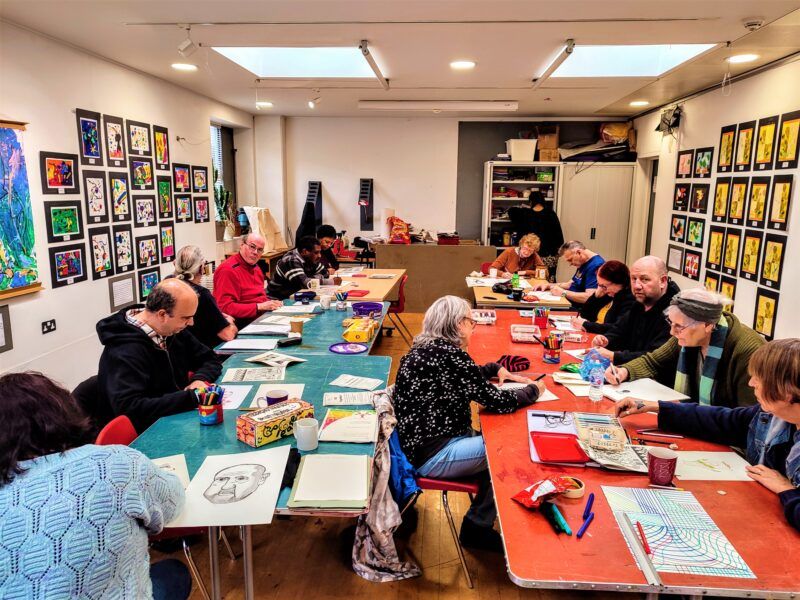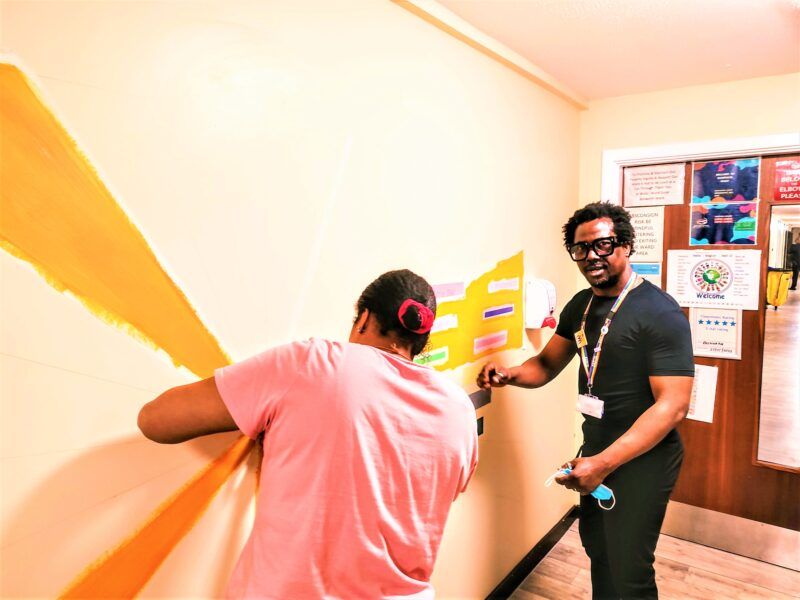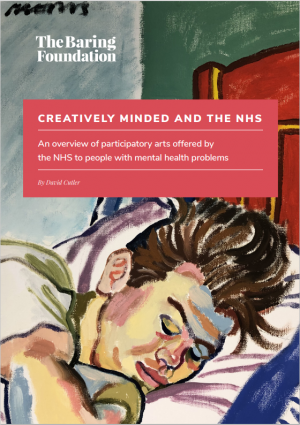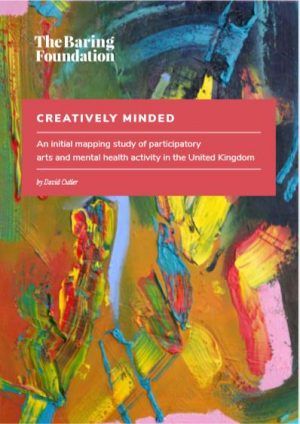There might be lots of reasons why people want to get more involved after initially joining an arts for mental health group or project – to develop new-found interests and skills as artists, perhaps they’ve found an important community; and hopefully because creativity has proven an important part of managing their mental health. This blog by Tim Sayers explains how at BrightSparks they develop opportunities for participants to continue to develop artistically.
For a number of years BrightSparks: Arts in Mental Health CIO has worked in partnership with Leicestershire Partnership NHS Trust (LPT) and University Hospitals of Leicester NHS Trust (UHL) to develop a programme of developing mental health service users as both participatory and commissioned artists. Participatory artists are delivering workshops in the community and on mental health wards, with commissioned artists exhibiting, performing and publishing.
The work is delivered with an ethos of improving the prognosis of our service users by delivering recovery focussed care based on the CHIME conceptual framework for personal recovery in mental health (Leamy et al 2011) and how the arts can deliver CHIME outcomes (Sayers and Stickley 2018).
Most of our potential participatory artists initially attend arts groups that we run ourselves, as regular service users. These workshops include visual arts, music, comedy, and creative writing. Alternatively, service users approach us, offering their services as potential participatory artists or as volunteers who wish to support our arts groups. Whatever their point of entry, we are always keen to give service users the opportunity to develop themselves to become participatory artists at some level.

We are fortunate enough to receive regular funding from a local mental health charity which allows us to offer paid opportunities for service users to ‘have a go’ at delivering workshops themselves. Where possible we also include an element of service user development in larger project funding applications.
While we always want to give service users opportunities, we also don’t want to place them under too much pressure or compromise their mental health recovery. Accordingly, our project managers support delivery and are always in a position to take over at any point; this practice is especially needed when supporting particularly vulnerable service users or service users whose mental wellbeing can be unpredictable or subject to fluctuation.
We are very much used to service users delivering workshops, performing, or being commissioned for long periods of time, over a number of years in some cases. We see patience as being the key and the constant offer of opt out, opportunity and support. We also swear by an attitude of hope and optimism, a constant expectation of success, and an attitude that the arts can change the world while we change ourselves for the better.
At present we have mental health service users:
- delivering arts and creative writing workshops and projects
- delivering comedy workshops
- delivering music sessions and performances on mental health wards
- delivering performances in a variety of community venues
- delivering artworks and murals for display in a variety of mental health venues.

Case study: EC
EC had previously been under the care of a Therapeutic Community for an extended period. As part of her discharge plan she was referred to our Arts in Mental Health Service.
Initially she joined our ArtSpace Group and then our ArtsCafe Group as a participant.
With increasing self-confidence, she took on more of a supportive role.
After a period of time, she became a volunteer, and as her confidence developed, she led occasional sessions.
She then benefited from charitable funding to deliver a project, producing a small exhibition that was displayed in the reception area at the local mental health unit.
During the Covid pandemic she delivered two successful online Arts Workshops as part of our Remote Art Project.
On returning to face-to-face workshops, she once again benefited from charitable funding to deliver another arts project. On this occasion she worked with another service user who simultaneously delivered writing workshops. This project culminated in the production of a wonderful publication and touring exhibition.
She has now been successful in gaining employment as a Peer Support Worker with LPT. She is also looking to, with our support, developing her own Mental Health Theatre Group.
Case study: BP
Following a period of time in our local mental health unit under a section of the Mental Health Act with a diagnosis of psychosis, BP was referred to our service by his community mental health team.
He initially joined our Smoothie Sound System as a participant.
After a period of time he requested support to restart the Youth Work training that he had previously been undertaking. I contacted a local arts organisation, who were happy to take him on as a volunteer and to restart his youth work training.
He soon developed the skills to support delivery of the Smoothie project and to lead sessions when called upon. With further experience he is now receiving permitted earnings to work as the support artist for the project.
He is also employed to deliver DJing sessions on wards at our local mental health unit.
After a long, challenging process, he has now completed his youth work training and been successful with gaining part time employment as a youth worker.

